#Rocky Mountain goldenrod
Photo
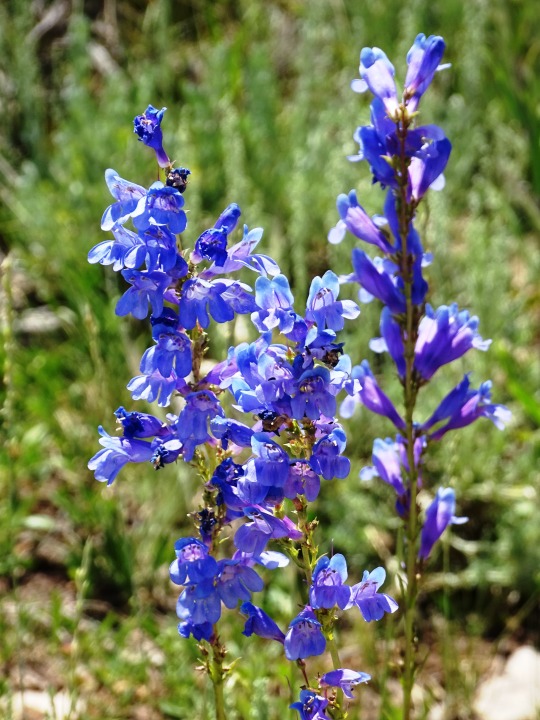

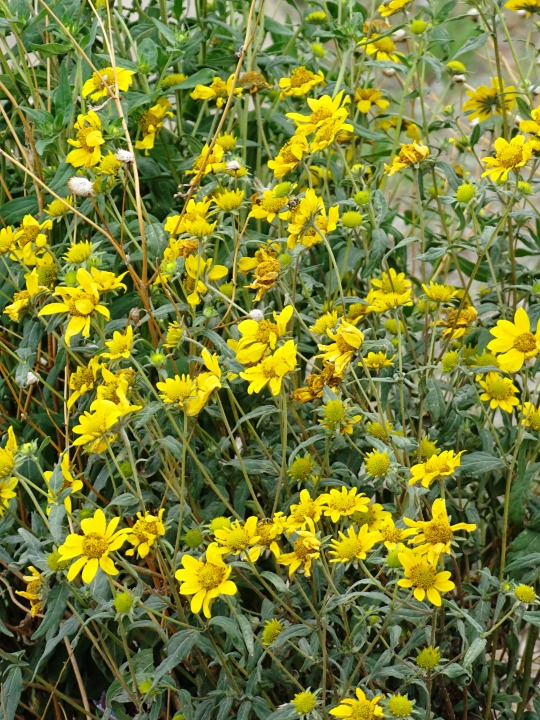
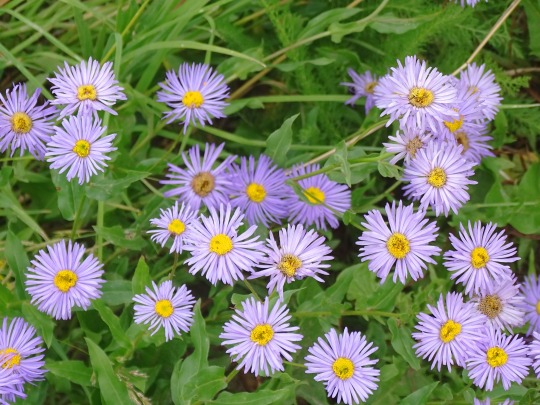


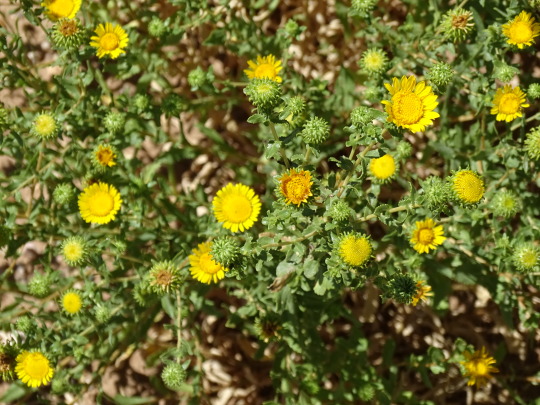

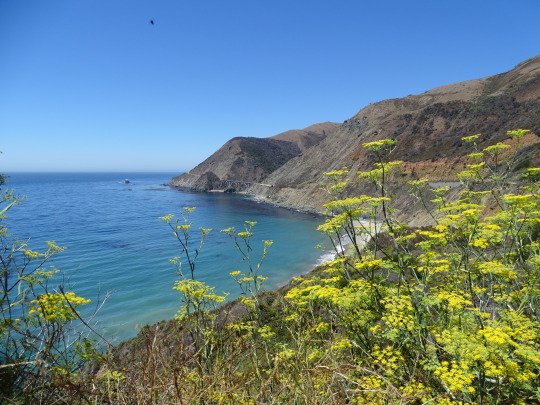

Vernal/Spring Equinox
The March Equinox is an annual celebration that occurs on March 20. In the Northern Hemisphere, the March Equinox is referred to as the vernal equinox. It marks the start of Spring in the Northern Hemisphere and the autumn season in the Southern Hemisphere. It marks the Sun’s crossing above the Earth’s equator, moving from south to north. Like all equinoxes, the March equinox is distinctive in that it has almost exactly the equal amount of daylight and nights across many latitudes of Earth.
History of March Equinox
Wherever you may be on Earth, the equinox brings us several seasonal effects which have been noticeable to nature lovers around the globe for years. The word ‘equinox’ originates from two Latin words: ‘aequus’ meaning equal and ‘nox’ meaning night. The literal meaning is ‘equal night.’ Our ancestors, who had far less precise timekeeping than we do, believed that night and day were equal. But today we know this is not true.
People have been celebrating the March Equinox for centuries and since it is associated with spring the festivals tend to celebrate fertility and agriculture. The Romans used this day to celebrate their goddess Cybele who has driven around in a chariot drawn by lions. Ancient Persia in roughly 550 B.C., celebrated the vernal equinox as Nowruz, their New Year. Modern Iranians still celebrate this time as their New Year. During the era of the Shang Dynasty, which ruled China from 1600 to 1046 B.C., it was believed that the spring equinox marked a mythic beginning, a type of ‘start of their line.’ Jews in the 12th Century believed that the spring equinox marked the day in the year in which the Biblical plague that turned Egypt’s water into blood occurred.
The festival of ‘Holi’ is the March equinox festival in India. This is celebrated in honor of various Hindu deities and legends. It signals the triumph of Good vs Evil, the most notable being the legend of Krishna and Rhada. Ancient cultures had great awareness of nature, the seasons, and the movement of the celestial bodies. Many built sites that had a glaringly obvious use: that of a calendar. These were often aligned to display shafts of sunlight during solstices and equinoxes. Examples of these are Chichen Itza in Mexico, Mnajdra Temples in Malta, and Stonehenge in England.
March Equinox timeline
Before the year 68 B.C.The Sun Lines Up in Aries
The sun lines up with Aries on the spring equinox but in 2567 the sun will line up with the constellation Aquarius.
2700 B.C.The Egyptian Easter Monday
Sham el-Nessim is an ancient Egyptian holiday that can be traced back to 2700 B.C.
1582The Gregorian Calendar Created
The Gregorian calendar is created and is based on the March equinox, falling from March 11 to March 21, the date it occurred in 325 CE.
1948Japanese Make Holiday Secular
In Japan, those who practiced Shintoism used the March equinox to honor their ancestors.
March Equinox FAQs
What happens during the March equinox?
During this time the Sun will cross the celestial equator from the south to the north.
What is the spiritual meaning?
Tradition states that this is the time to cleanse out old energy at home and with oneself.
Why is equinox important?
Equinox is important because it points to changing seasons.
March Equinox Activities
Spring Clean
Do some gardening
Visit ancient sites
The March equinox is the perfect time to give your house an overhaul. Start by decluttering your house.
Growth symbolizes triumph over death and being reborn therefore it has become a tradition to plant seeds at this time of the year. Add some colorful flowers to your garden to celebrate spring.
Various ancient sites are linked to March equinox celebrations and traditions. Pack a bag, call a friend or two and set out on an adventure.
5 Facts About The March Equinox
The sun rises and sets the fastest
Spring occurs on two different days
It’s Mother's day
It marks the middle of Spring
It signals the start of a festival
The fastest sunsets and sunrises occur during this time of the year.
There are two different calendars: the astronomical and the meteorological calendar. If we go by the astronomical calendar, spring will fall on March 20 but if we go by the other, spring will occur on March 1.
In Arab countries, Mother's Day is often observed on the March equinox.
In East Asian countries the March equinox marks the halfway point of spring.
Boatyard employees and sailboat owners in the U.S hold the Burning of the Socks festival where socks are burnt to celebrate the warmer weather.
Why We Love March Equinox
It is celebrated around the world
It signals new beginnings
Days are longer
The March equinox is celebrated by many cultures around the world. We love that it has a unifying factor.
The March equinox symbolizes growth and new beginnings. It is a clear marker of the change from winter to spring.
Along with longer days, the weather starts to warm up as well. Nature reflects this change with the blooming of new flowers and plants.
Source
#Rocky Mountain penstemon#Desert Globemallow#Hairy Golden Aster#flora#wildflower#original photography#Rocky Mountain goldenrod#fireweed#USA#Curlycup gumweed#Patrinia scabiosifolia#Convolvulus arvensis#Spring Equinox#First Day of Spring#Vernal Equinox#March Equinox#20 March 2023#original photogrpahy#travel#vacation#summer 2022#meadow
2 notes
·
View notes
Photo

First 15 of my series of linocuts of native plants in Alberta are now available for order in my shop! Letter Mail Option // Rigid Mailer Option
Each print is drawn, carved, and printed by myself on handmade paper, also made by me!
You can find some quick facts about each plant in my highlighted stories on insta if you wish! From top left in the first image we have: Pineapple weed, Jacob's ladder, Pussytoes, Goldenrod, Yarrow, Purple Coneflower, Mountain Hollyhock, Gumweed, Red Paintbrush, Prickly Rose, Rocky Mountain Bee Plant, Blue Beardtongue, aaaand Columbines!
Let me know which ones your favourite so far- and which native plant I should carve next! (prairie smoke and strawberry spinach are already in the works!)
#botanical art#floral art#floral prints#alberta native plants#black and white#flowers#plants#cottagecore#forager art#foraging#medicinal herbs#witchy art#garden witch#kitchen witch#edible plants#natural dye#pineapple weed#wild chamomile#jacobs ladder#pussytoes#golden rod#yarrow#coneflower#echinacea#hollyhock#mallow#gumweed#paintbrush#rose#prickly rose
59 notes
·
View notes
Text
Nacogdoches is one of dozens of Texas cities that have planted pollinator gardens, providing way stations for the long monarch migration
Take the people of Nacogdoches. Billed as the “Garden Capital of Texas,” the town of 35,000 has long promoted beautification efforts, including projects with the local Stephen F. Austin (SFA) Gardens. Nacogdoches recently went a step further, joining more than 600 cities nationwide in taking the National Wildlife Federation’s Mayors’ Monarch Pledge. By signing on, leaders commit to expanding monarch habitat and educating residents about pollinators.
In making their improbable journey, monarchs need all the help they can get. East of the Rocky Mountains, the butterflies head south at the end of summer and, after overwintering in central Mexico from late October to March, begin their long return north. Milkweed, essential for monarchs, and other nectar-producing plants serve as way stations, providing nutrients and shelter en route.
Much of the monarch’s decline in recent decades can be linked to the disappearance of these way stations, often due to development. By designing and planting a series of pollinator-friendly gardens beginning in 2019, Nacogdoches became a champion of monarchs and other pollinators, sending a message of hope for many migrating species.
That positivity extends to the human population. “The four monarch gardens in Nacogdoches provided opportunities for a diverse group of people to learn about and plant these pockets of conservation,” says Dawn Stover, representative for SFA Gardens at the time of installation. “We had generations of gardeners making these projects come to life.”
Selecting native flora not only helps pollinators. It also educates home gardeners who might have overlooked certain plant species. “As people watch early-blooming penstemons give way to summer wild bergamot and giant cornflower, then transition to fall with goldenrod and asters, they become enchanted with the living world,” says Kim Conrow, past president of the Native Plant Society of Texas.
The Nacogdoches gardens—each registered as a Certified Wildlife Habitat®—were the result of an effort between the city’s Parks & Recreation Department, NWF’s Monarch Conservation Urban Outreach and Monarch Stewards programs, SFA Gardens and the Native Plant Society of Texas, with a donation by the James A. “Buddy” Davidson Charitable Foundation. “[These gardens] are a way for us to celebrate the great partnership and collaboration with the communities to support monarch migration,” says Rebeca Quiñonez-Piñón, climate-resilient habitats senior manager and monarch recovery strategist for NWF.
Nacogdoches is among dozens of Texas cities that have taken the NWF pledge—currently the second most of any state. Others include the Lower Rio Grande Valley city of McAllen, where the renowned Zapotec artist Irving Cano’s mural “Destino Monarca” was installed in 2022.
Both the mural and the gardens are “conduits helping us to raise awareness about the situation of the monarch butterfly but at the same time increase native habitat in urban areas while we educate others,” Quiñonez-Piñón says. “We can see the demonstration gardens as creating art, too.”
32 notes
·
View notes
Text
More flowers from my garden!
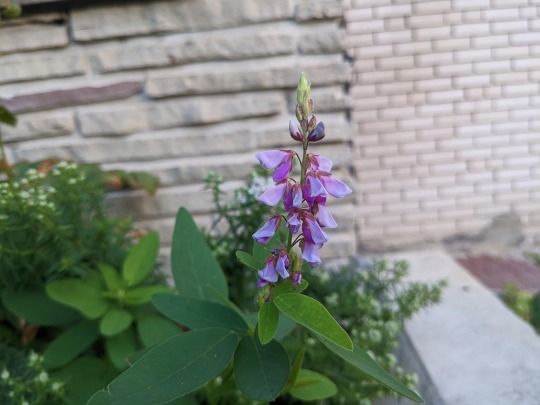
Desmodium canadense (showy tick trefoil)
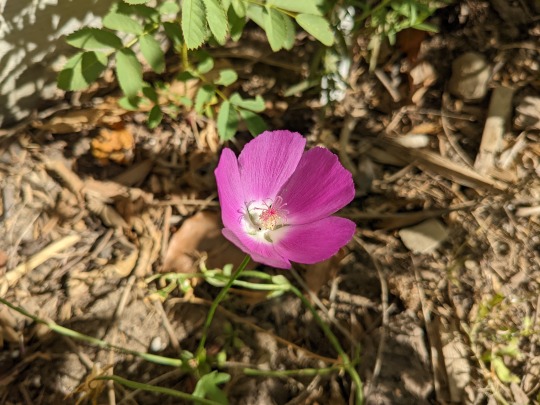
Callirhoe involucrata (purple poppymallow)

Pycnanthemum virginianum (Virginia mountain mint)
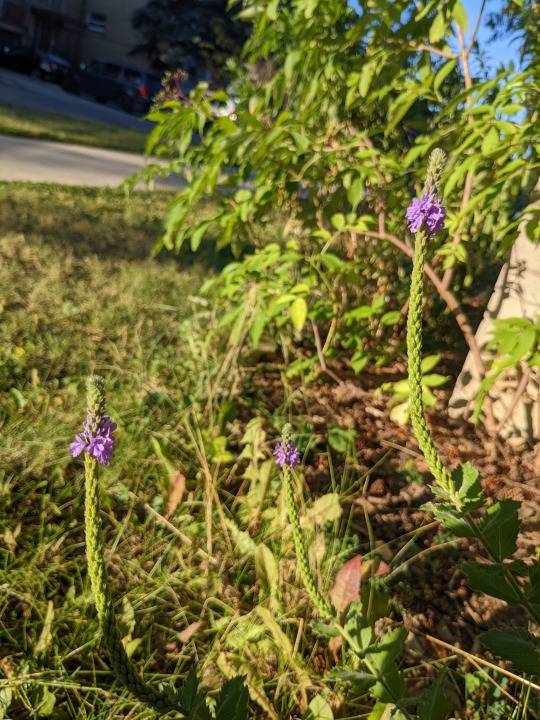
Verbena stricta (hoary vervain)

Eupatorium purpureum (sweet joe-pye-weed)

Monarda punctata (spotted beebalm)
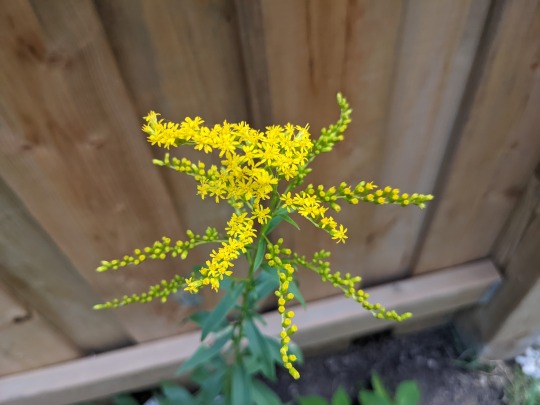
Solidago juncea (early goldenrod)
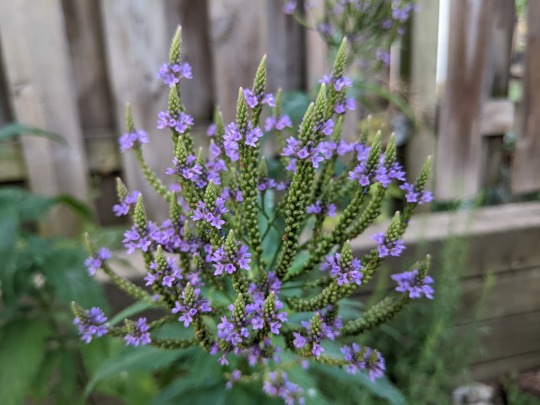
Verbena hastata (blue vervain)
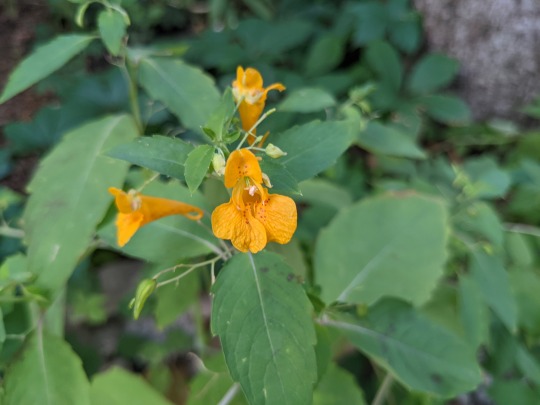
Impatiens capensis (spotted jewelweed)

Helianthus nuttallii (common tall sunflower)

Symphyotrichum ciliatum (fringed blue aster)
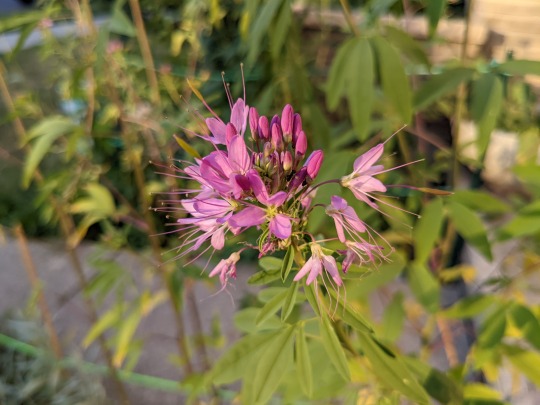
Cleome serrulata (Rocky Mountains bee plant)

Actaea racemosa (black snakeroot)

Helianthus pauciflorus (stiff sunflower)
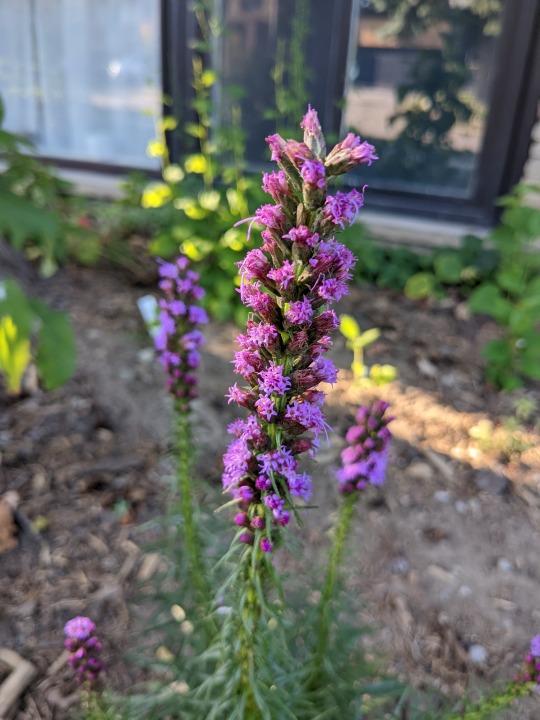
Liatris spicata (dense blazing star)

Hypericum punctatum (spotted St. John's wort)

Spiraea alba (meadowsweet)
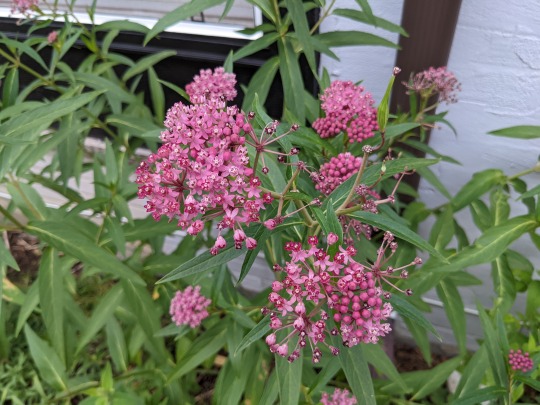
Asclepias incarnata (swamp milkweed)

Agastache foeniculum (anise hyssop)
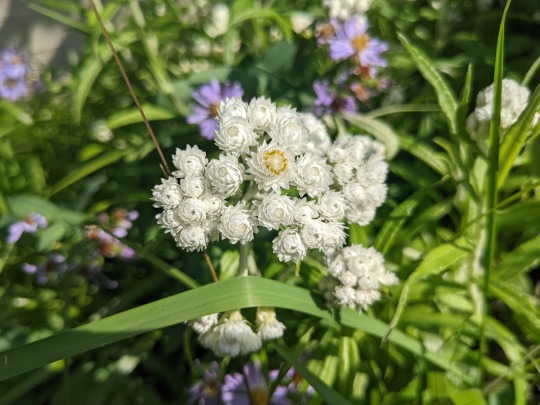
Anaphalis margaritacea (pearly everlasting)

Symphyotrichum laeve (smooth aster)
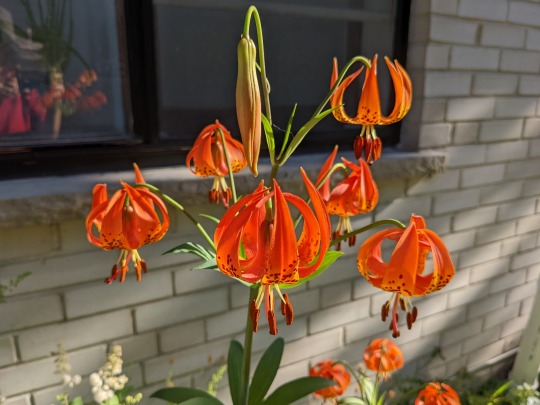
Lilium michiganense (Michigan lily)
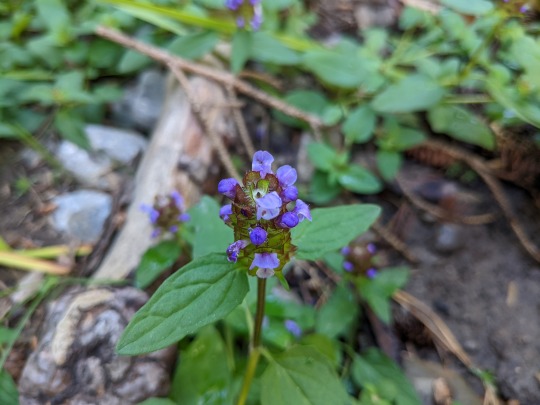
Prunella vulgaris ssp. vulgaris (common selfheal)

Symphyotrichum lanceolate (panicled aster)

Astragalus canadensis (Canada milk vetch)
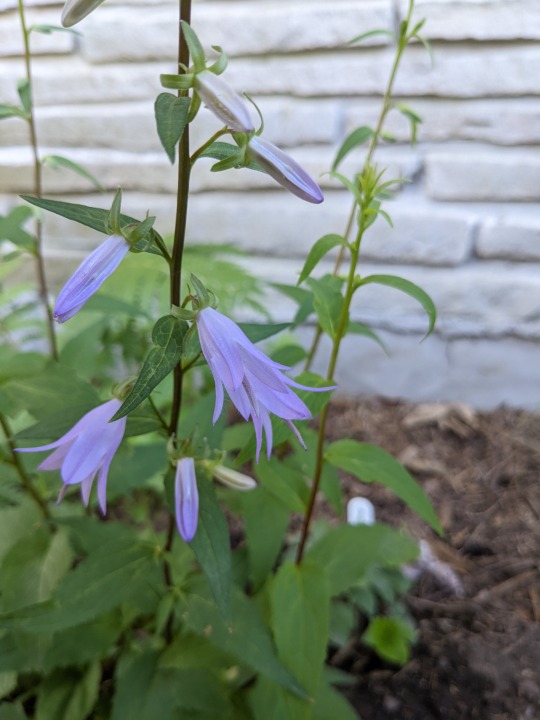
Campanulastrum americanum (marsh harebell)

Sambucus canadensis (common elderberry)

Mertensia paniculata (tall bluebells)
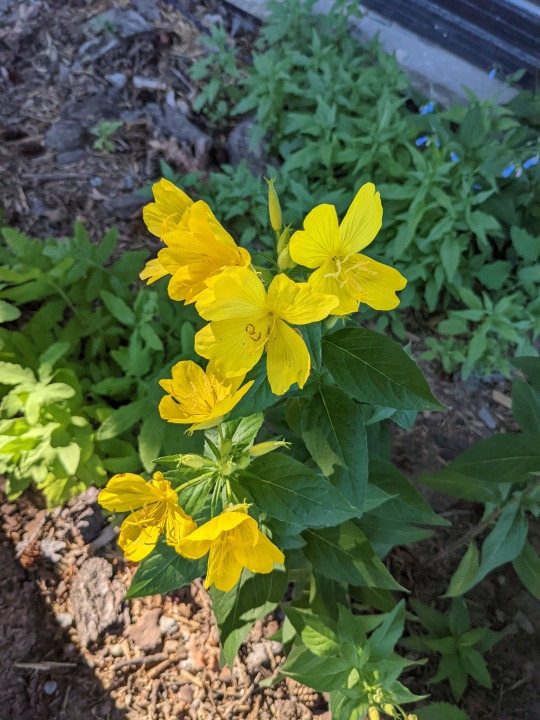
Oenothera fruticosa (narrow-leaved sundrops)

Lilium philadelphicum (wood lily)
And cut off again. lol
16 notes
·
View notes
Text
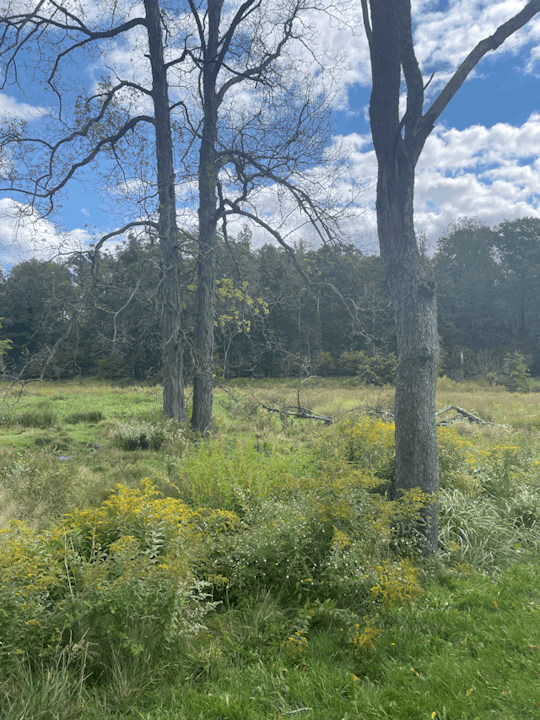

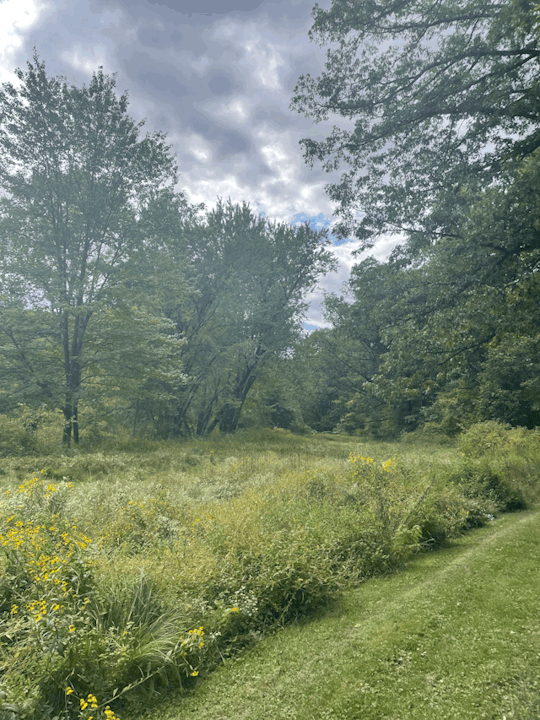

Solidago Gigantea, also known as tall goldenrod is a perennial herb that reaches heights of 6.6 ft tall. It is a widespread species and most typically found in North America, east of the Rocky Mountains. A fun fact is that an herbal tea can be made with the flowers.
Brown Knapweed is a species of herbaceous perennial plants and is typically found in dry meadows and open woodland throughout Europe and North America. It flowers mainly from June to September. A fun fact is that it can grow in disturbed sunny areas, such as road ditches and woodland clearings.
Lance-Leaved Aster is a species of flowering plant native to North America. It can be found in mostly moist and open habitats, such as riparian areas, meadows and ditches. A fun fact is that “aster” in Greek means “star”, and they are a part of the daisy family.
3 notes
·
View notes
Note
Frank I'm working on a world building project, would you mind helping me create some plants for the fantasy world? Either naming them or drawing them would be great!
Fantasy Plants I love writing in a fantasy setting, and while I've tried to draw a few plant concepts before, I haven't yet managed to capture the beauty of the plants of real life (which are of course fantastical in nature!). I figured some plants from real life would be great as inspiration for fantasy plants. The world I've written most about is a pre-industrial setting in the Northern Hemisphere, specifically a land with cold winters where a great many plants are frost tolerant, and warm summers where a great many plants are temperate. I'd like to have a good selection of all those and some additional plants in a fantasy setting.
I will say that I am not well-versed in plant biology, so I'm open to hearing suggestions for improvements on the list below. For each plant, I provide an image from my Google search, and the name of the plant as well. Feel free to use these images as a reference for your own world building projects, with credit as always.
1. Arctic plants and other cold-loving plants
Name: arctic plants
Image: Ice floe
Plant type: a sub-branch of the conifer family Pinaceae, the true trees of arctic regions, where they are dominant plants in some areas, like Canada
Name: mosses
Image: arctic moss
Plant type: non-flowering plants, often in tufts, with thick, often dark, dark green and often waxy-looking blades
Name: lichen
Image: white spots of lichen
Plant type: an association between a fungus and a bacteria, often with green patches where the fungus has taken hold
Name: northern grassland wildflower
Image: flower of goldenrod (Solidago virgaurea)
Plant type: flowering perennials in the aster family
Name: Arctic heath
Image: flower spikes of mountain aven (Avenella corundens)
Plant type: perennial plants often growing in heaths and grasslands
Name: polar bear hair moss
Image: a moss in the genus Scleropodium, growing in rocky areas
Plant type: moss
Name: Arctic dwarf shrubs
Image: flowering dwarf shrubs in the buckthorn family
Plant type: flowering perennial shrubs in the dogbane family, often of low stature and with yellow flowers
Name: mosses
Image: arctic moss
Plant type: non-flowering plants, often in patches
Name: mountain aven
Image: flower spikes of mountain aven
Plant type: perennial plants often growing in heaths and grasslands
Name: willow
Image: flowering dwarf shrub in the flowering pellitory family
Plant type: flowering perennial dwarf shrubs in the rose family
Name: cinquefoil
Image: a plant in the quillweed family, growing in grassy meadows
Plant type: a perennial plant in the sunflower family
Name: sphagnum moss
Image: patches of sphagnum moss, a perennial herb
Plant type: a grass that does not have leaves
Name: reindeer moss
Image: white patches on a rock
Plant type: a moss with thick, stiff, white blades
2. Temperate and tropical plants
Name: conifers
Image: Douglas fir
Plant type: tree, pine and spruce conifer in the family Pinaceae
Name: broadleaved deciduous trees
Image: a deciduous tree in the oak family
Plant type: an evergreen tree in the oak family
Name: elm
Image: flower of the elm
Plant type: tree with evergreen leaves
Name: grassland plants
Image: flowering perennials in the daisy family
Plant type: flowering perennial grasses in the grass family
Name: juniper
Image: fruit of the juniper tree in the cypress family
Plant type: flowering tree in the cypress family
Name: dogwood
Image: fruit of the dogwood tree in the mountain laurel family
Plant type: flowering tree in the aster family
Name: wildflower
Image: yellow flowers of mountain asters
Plant type: a species of aster
Name: flowering dwarf shrub
Image: purple-fruited flowering shrubs in the heather family
Plant type: flowering species in the rose family
Name: flowering plants
Image: yellow flowers of flowering plants
Plant type: flowering plants
Name: grasses
Image: golden grasses
Plant type: grasses without leaves
Name: mountain aven
Image: flower spikes of mountain aven
Plant type: flowering perennial dwarf shrubs in the dogbane family
4, Insects, nematodes, and other forms
Name: flower crab crab
Image: yellow crab flowers
Type: plant associated with a crab, typically with a green stem and dark green to blackish-fruited leaves
Name: flowering crab
Image: yellow crabflower
Plant Type: flowering crab
Name: flowering crab
Image: flower of the crab plant
Plant Type: flowering crab
Plant name: crab crab crab crab crab crab crab crab crab crab crab crab crab crab crab crab crab crab crab crab crab crab crab crab crabs crab crab crab crab crab crab crab crab crab crab crab crab crab crab crab crab crab crab crab crab a crab crab crab crab crab crab crab crab crab crab crab crab crab crab crab crab crab crabs and a thehhhhhhhhhhhhhhhhhhhhhhhhhhhhhhhhhhhhhhhhhhhhhhhhhhhhhhhhhhhhhhhhhhhhhhhhhhhhhhhhhhhhhhhhhhehehehe
14 notes
·
View notes
Text
Severe surge regarding thou shalt not kill violations
Fifth commandment breached regularly
epidemic of gun violence in America
bullets fly, scream and tear into flesh
senseless rampant mass killings
rip across fabric of society
buzzfeeding, jump/kickstarting,
paradigm of mortality.
Since January first
two thousand and twenty three
countless innocent people lost lives
deliberately, yet randomly targeted
shot dead at point blank range
merely going about
their ordinary business.
No clear cut motive nor profile
delineates active shooter(s),
who could be either (or any) gender
and range in age
from grade school to septuagenarian.
The latest homicides woo,
and appease the grim reaper,
where gunman(men)/women slew
dirty deeds done dirt cheap
many baker's dozen innocent people
unknowingly and unwittingly drew
(rather gurgled) their last breath
choking on splintered blood vessels
beckoning, issuing, and twittering minimal
horrific animal primal gasps and groans.
Adversarial criminal minds
finds yours truly to interject
reasonable parenthetical rhyme without reason,
thus I temporarily tack tangentially offtrack
with cogent concise contemplation
to extemporize, lyricize, and soliloquize
brutal nasty senselessness
perpetrated courtesy fearsome
half cocked pistol packing maniacs,
whereby evils unrelentingly replaying nightmare
(exceeding cruelty by magnitudes administered
courtesy rocky horror picture show)
of gruesome carnage broadcast across
social media platforms
of killing fields anew,
in the minds of those unfortunate souls
who bear witness to deadly crime,
where odd stark juxtaposition
elicit skeletal goldenrods yellowed stalks
adrip with morning mountain dew
encompassing fresh footprints,
where berserk humans
prowling in the tall grass
(them of naked ape infamous
zoological niche) lately trod
in search of human prey
welcomed unsuspecting killer(s) true
colors transformed into hideous monsters
predictably soothing savage beasts
undertakers grisly task patching
shredded bodies after homicidal maniac
fired bullet(s) setting corpse
recalibrating counting queue.
As month one of new year
(according to Chinese tradition
water rabbit constitutes animal de jure)
allows, enables, and provides
brisk business for crematoriums
or funeral parlors.
Whether native American citizen
or foreigner (perchance student) slain
survivors bereave and issue final adieu,
whether gentile nor Jew,
perhaps including
child named Caillou
instantaneously slain, who
knew
not what felled them
engrossed amidst social ballyhoo
ex post facto registering grievous hue
pallbearers accentuating somber view
eclipsing most recent prior massacres
similar to previous you
ululations yesterday's sorrows
without handy dandy blue's clue
lame motive explaining
cold blooded slaughter
vis a vis unsurprising discover re:
firearms Jane/ John Q.
Public kept stashed loaded, deployed...
guns up the kazoo
cocked, gauged, primed...
for unleaded opportunity
to unleash barrage
invariable generating hullabaloo
to curb bloody violence
trumpeting predictable brew
ha ha alloyed against National
Rifle Association almighty
Republican supported
lobbyist's motley crew
versus increased uproar
protesters chorus nearly few
tile opposition pitted grand Poobah
despite alarming statistics shew
plus increasing fresh gravesites dug
amidst freshly mowed fescue
attesting to wanton shell shocked
headlines indiscriminate brew
tilly assaulting sensibilities
without rhyme nor reason
yet, yours truly doth boo
leave rampant hatred
directly linkedin to
former "FAKE" commander in chief,
(biden his time as patient hunter)
whose acrid, horrid, rabid vitriol
still darkly colors political hue
man gushing bloody fountainhead few
ming and appreciable frothing
lathers up right wing supremacists
greenlighting smoldering new
bile radicals hot headed
volatile mindset whereby
self anointed anarchistic Guru
possibly fuels global warming
evidenced by displaced Inuits
flooding courtesy melting igloo.
0 notes
Text
island names
i’ve seen a few people do this already, but as it’s 3 days away and some people are panicking about their island name, so i tried to put one together! if you use it credit isn’t necessary~ i also suggest taking inspiration from fictional places or street names near you!
COLORS
blue, azure, cyan, green, lime, gold, yellow, silver, white, black, grey/gray, grayscale/greyscale, monochrome, rainbow, purple, violet, chartreuse, navy, iridescent, orange, pale, pastel, light, dark, neon, rooster, ruby, emerald, sapphire, lavender, scarlet, crimson, periwinkle, magenta, maroon, bronze, copper, teal, ivory, ebony
ANIMALS
goat, bear, grizzly, paw, purrfect, kangaroo, cat, kitty, dog, wolf, pig, cow, boar, bird, dove, deer, stag, horse, ferret, rat, sheep, fawn, bee, bumblebee, butterfly, bunny, rabbit, hare, antler, koi, fish, shark, whale, dolphin, crab, snail, teddy, lamb, pelican, penguin
PLANTS
azalea, catnip, basil, parsley, pumpkin, twig, rose, blossom, lily, carnation, pansy, bark, branch, twig, pine, sprig, poppy, sprout, daffodil, daisy, buttercup, root, thorn, acorn, thistle, bush, bud, sunflower, forsythia, juniper, holly, allium, angelonia, artemisia, aster, zinnia, mushroom, shroom, fungi, moss, lichen, goldenrod, reed, cattail, foxglove, candytuft, geranium, hollyhock, iris, lupine, marigold, orchid, primrose, valerian, snapdragon, tansy, tulip, carnation, bellflower, boneset, carnation, catmint, chive, sage, comfrey, cosmos, maple, acacia, willow
FOOD
clementine, tangerine, banana, pudding, berry, fruit, sorbet, milk, cream, zucchini, pumpkin, peach, apricot, apple, cheese, honey, nectar, butter, sweet, sour, spicy, pepper, turnip, beet, beetroot, treat, confection, sugar, sugarcane, jam, jelly, breakfast, lemon, lime
NATURE
cloud, stone, rock, rocky, stony, sky/skye, breeze/breezy, marble, granite, county, orchard, farm, mountain, garden, wool, clay, star, moon, lunar, solar, sun, sunbeam, moonbeam, crescent, halfmoon, new moon, full moon, comet, asteroid, meteor, river, stream, pond, lake, sunnyside, evergreen, cosmo, pearl, diamond, evening, forest, coast, meadow, field, jungle, savanna, marsh, reef, wilderness
MISC
candle, bell, piano, whisper, wisp, castle, mystery, mystical, mythical, humming, song, tweet, tarot, horseshoe, theatre, theater, pottery, twinkle, flame, fire, dream, daydream, sanctuary, flutter, haven, harbor, sanctum, ghost, spirit, basket, crown, jewel, gem, fairy, fae, sprite, imp, mansion, manor, shepherd
DESCRIPTORY/CONCEPT
tropic, distant, faraway, mystical, mythical, trick, illusion, hope, promise, magical, starry, sunny, dark, light, shining, dreamy, lazy, future, holograph, demonic, angelic, cozy, goth/gothic, musical, glory, cosmic, stellar, perennial, sandy, ashen, florescent, lustrous, dappled, oath, found
SUFFIXES (can replace “island” or be linked with a word!)
ville, isle, valley, bloom, village, hill, harbor, ranch, city, tale, fields, park
617 notes
·
View notes
Text
Fun fact, the names of towns and cities in each region in pokemon had themes to them (buckle in, this is a long post)
So, I've known this since 2013-ish, but it's a fact that never stops amazing me, you know?
Let's talk about them (I'm doing gen 1 to 5, English names)
Kanto [Gen 1 (RGBY), Gen 2 (GSC), Gen 3 (FrLg), Gen 4 (HGSS), Gen 7 (LG:P/E)]
Pallet Town is literally a painter's pallet, and all the other towns and cities are named after colours. Yes, there's symbolism there.
Also, each town's dominant colour is the colour of it's name (e.g. Fuchsia City has fuschia streets)
I'll discuss the Sevii Isles in a separate post, cause FUN FACT, there are actually 2 explorable regions in Gen 3 Kanto.
Johto [Gen 2 (GSC), Gen 4 (HGSS)]
All the towns in Johto are named after:
1. Trees (Goldenrod, Mahogany, Blackthorn, Violet (a Jacaranda tree), Blackthorn...)
2. Tree-related terms (Newbark, Cianwood (based more on the colour of the wood (Cyan) than it is on any one tree), Cherrygrove (not just cherry; but a grove of cherry)
Newbark Town is also a symbolic name, in that: though it's not a specific tree, all growing trees, in some way, replace their barks. It's shows beginnings and growth.
Hoenn [Gen 3 (RSE), Gen 6 (ORAS)]
All of the towns amd cities are, essentially, compound words that describe them. I use essentially because some of the component words are modified, either by getting rid of syllables and/or letters, adding syllables and/or letters.
The only really interesting towns/cities here are Littleroot, Sootopolis, and Evergrande.
Littleroot is called Littleroot because:
1. It IS a little town.
2. It's not the beginning of the MC's journey, but it is the first place they put down roots; little roots.
Sootopolis:
It's obviously a combination of Soot and Metropolis.
While Metropolis makes some sense (some is the operative; I don't really see it as a centre of anything economic or urban for Hoenn (that would be shared between Mossdeep and Lilycove) but it does seem densely populated???) However, it IS the location of the Cave of Origin, so maybe that's the determining factor... I'm not sure here, you tell me.
Now for Soot, there's multiple ways to look at it depending on the games(and essentially, timeline) you're discussing (RSE or ORAS). RSE Sootopolis is located in the crater of an extinct volcano, while ORAS Sootopolis is in the crater of a meteor impact (again, timelines. Zinnia? Deoxys? Making some connections I'd hope). Volcanos and Meteor Impacts tend to produce a lot of soot, but I don't think that's it.
Through bits of info from some of the NPCs in the game, we can assume that Sootopolis was the site of Groudon and Kyogre's first battle. Most battles tend to be described as "flaming", and afterwards, "ashes settle". Ashes can be thought of as soot. And here comes my second theory "Soot" comes from the fact that a great battle was held in the crater. That's it.
It could also be named Soot to solidify the relationship between it and Mt. Pyre. You can ask me about this one or whatever.
Evergrande:
The reason this one is here is because I feel that the name is... oxymoronic. "Evergrande" implies that the city is larger than life (grande) and that that quality is eternal (ever) and yet... it has nothing, really. Someone in the developer's team is laughing, but I'm not sure who...
(And before anyone talks about the Pokemon League being part of the city; yes it is, but it isn't a permanent residence, or a residence at all, except for the Elite 4, the champion (not you though), and certain important staff)
Sinnoh [Gen 4 (DPPt)]
A hodgepodge of themes, really. Some towns are have compound word names, and others... aren't.
Twinleaf Town is a place of beginnings. Twin leaves are normally found on the apical meristems of plants, which are sites of active growth. So.
I think I'll do all the other towns as well.
1. Sandgem. Sinnoh's gem when it comes to a settled and sandy beach, because all other beach locations either have a small stretch of beach with rocky shores (Sunnyshore) or are really high end and only really populated by snobbish people like Backlot or wannabes (Valor Lakefront, the Resort Area)
2. Jubilife. Life is Jubilant here (cause business is booming, it's Sinnoh's economic hub).
3. Oreburgh. It's an autonomous municipal corporation (a city, lol) where ore is mined, usually coal-rich ore.
4. Floaroma. The aroma of flowers is particularly strong in this town. Wonder why....
5. Eterna. First non-compound word. It and one other town share this quality + a sort of mystical name. It's Eternal, why? It's super close to the foot of an extremely sacred mountain.
6. Hearthome. Home is where the heart is, and I think this must be your mother's home town (inferred from dialogue with her + others in the contest hall). Also, while Eterna and Celestic are close to Arceus, Hearthome is the home and heart to Sinnoh's core religion and what seem to be some of Sinnoh's origins (the strange structures in Amity Square).
7. Solaceon. Life in this place is a sort of solace from all the city life, has been for aeons. It's your domestic country town where work starts in the early morning, ends in the early evening, and entertainment and recreation is done in the bar out of town to avoid the corruption of the youth.
8. Veilstone. The city isn't just built from the rock; it's hewn from it.
9. Pastoria. Honestly don't know for this one. Someone... anyone really, please tell me.
10. Canalave. The city is built around a canal, and all life in it seems to subsist on economic activities based on said canal (except the library)
11. Celestic. It's the closest to Coronet's peak. It still holds certain traditions, such as elders and shrines. Celestial because of how close it is to creation, not just in space, but in time too. Also the, the "stic" might come from mystic, but I'm not so sure, so it and Eterna share a category.
12. Snowpoint. The snowiest point in Sinnoh that isn't Mt Coronet itself. Pretty cool, huh.
13. Sunyshore. Sunniest town in Sinnoh; so sunny , in fact, that the road is paved with solar panels? How does that work???
Unova [Gen 5 (BW/BW2)]
All the towns are named after clouds and cloud-terminologies.
I won't discuss any of the towns here, I'll do that in another post (cause I want to include images of the clouds too, but I'm feeling too tired and want this up as soon as possible, lol)
And, we, are... done. Wow. Next time, Unova, and then the Sevii Isles. Maybe Stadium, Stadium 2 and XD? Hmmmm...
#pokemon#kanto (pokemon)#johto#hoenn#sinnoh#unova#this is longer than i thought it would be gosh#i hope you enjoy anyway
5 notes
·
View notes
Photo
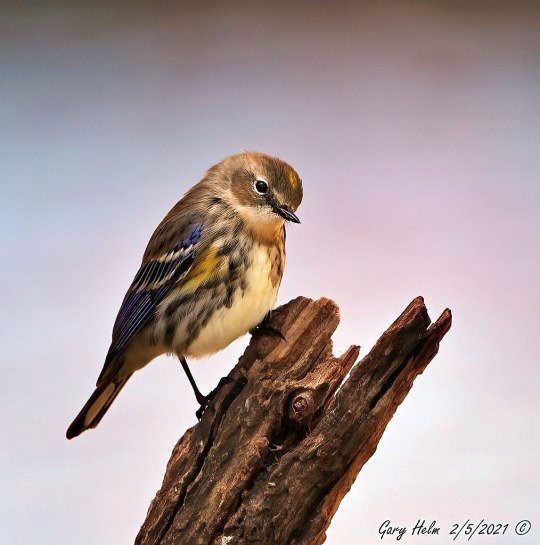
"Early Morning Butter-Butt" by Gary Helm Known affectionately as Butter-Butts, Yellow-rumped warblers, (Setophaga coronata), migrate south in the winter. These flocks of Florida snowbirds can be found in mangroves, scrub, forests, or your yard. Their winter diet consists of fruit from shrubs such as wax myrtle, juniper berries, poison ivy, and poison oak as well as many seeds including those from goldenrod and beach grasses. The yellow-rumped warbler ranges over most of North and Central America, breeding in the summer throughout most of the Rocky Mountains and along the far northern reaches of the continent. Come fall, it migrates in huge numbers, flying south to Florida and warm spots beyond. Not all yellow-rumps make the trip, however. Their ability to eat and digest certain wax-covered fruit allows them to spend the winter as far north as New England or even into Canada. There are two distinct forms of the yellow-rumped warbler, the wax myrtle, predominant in the east, and Audubon's, which tends to hang in the Rockies and is rarely seen in the east. Myrtles, however, will winter along the Pacific Coast. They've also been known to roam as far as Alaska, Siberia and Europe. Another one of my yard birds. Polk County Florida. https://flic.kr/p/2kCgLBQ
1 note
·
View note
Photo
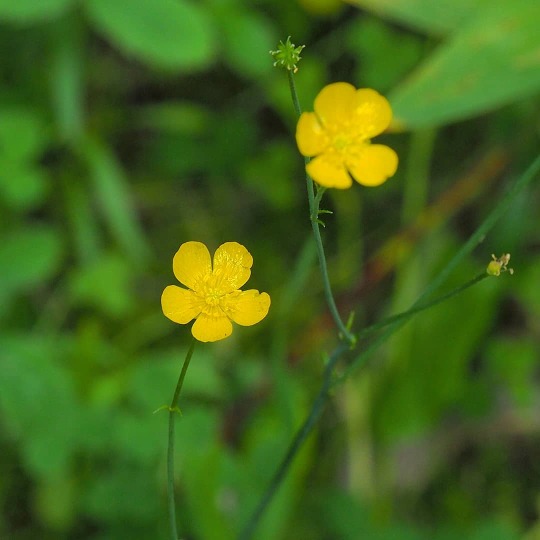
Grassy meadows with #buttercups and #goldenrod #wildflowersofinstagram #wildflowersofalberta #wildflowerjournal #reddeertrails #august #olympuspenf #penf #olympus14150ii #microfourthirds #microfournerds #olympusinspired #shootolympus #justshoot #mcbaincamera #rockymountainfoothills (at Rocky Mountain House National Historic Site of Canada) https://www.instagram.com/p/CEe4eMJFcOB6z7YH04k44RlBywNuOhsiemoZXU0/?igshid=1hoe3lzp5vc53
#buttercups#goldenrod#wildflowersofinstagram#wildflowersofalberta#wildflowerjournal#reddeertrails#august#olympuspenf#penf#olympus14150ii#microfourthirds#microfournerds#olympusinspired#shootolympus#justshoot#mcbaincamera#rockymountainfoothills
0 notes
Photo



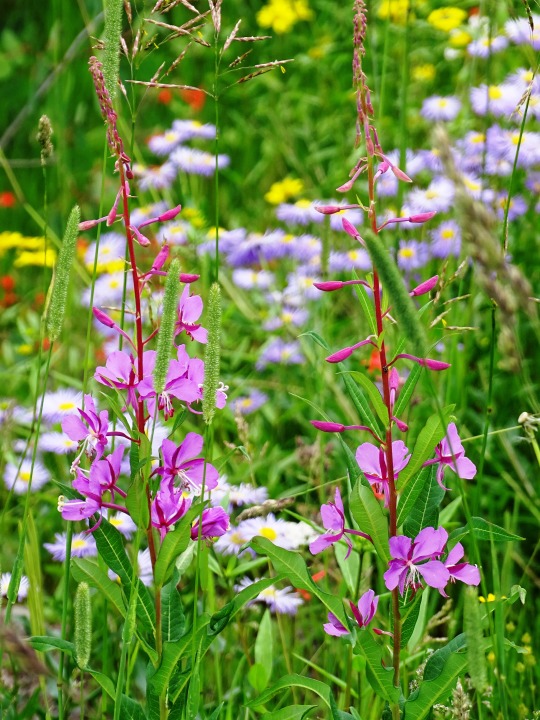

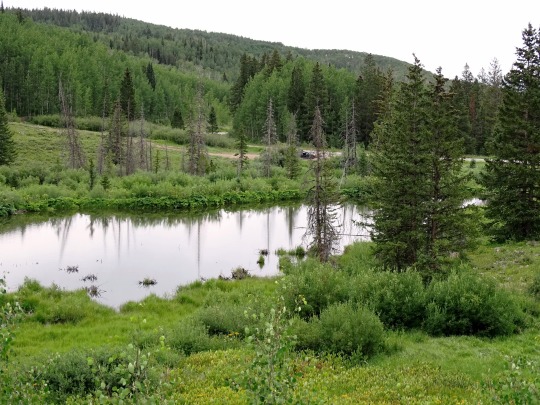


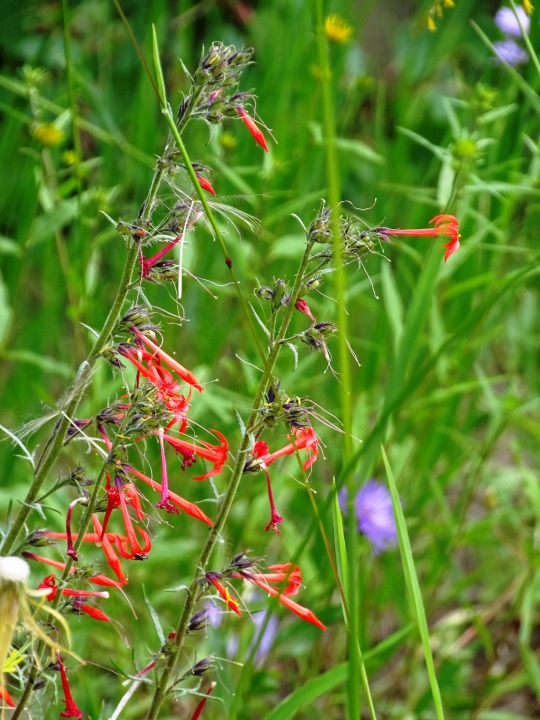
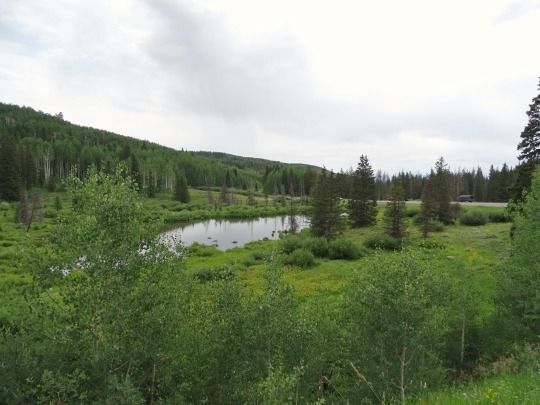
Grand Mesa National Forest, CO (No. 3)
State Highway 65 (SH 65) is a state highway in Colorado that crosses the Grand Mesa. The highway along with a road to Lands End Overlook were designated as the Grand Mesa National Scenic Byway in 1996. SH 65's southern terminus is at SH 92 east of Delta, and its northern terminus is at Interstate 70 (I-70) and U.S. Route 6 (US 6) northeast of Palisade.
Source: WIkipedia
#Scarlet gilia#fireweed#pond#wildflower#meadow#pine#tree#fir#flora#nature#blooming#aster#Rocky Mountain penstemon#Rocky Mountain goldenrod#tourist attraction#landmark#summer 2022#USA#Colorado#Mountain West Region#original photography#landscape#countryside#overcast#cloudy#close up#Grand Mesa National Scenic Byway#State Highway 65
1 note
·
View note
Text
Bee-Friendly Plants for Your Yard or Garden
New Post has been published on https://healingawerness.com/news/bee-friendly-plants-for-your-yard-or-garden/
Bee-Friendly Plants for Your Yard or Garden


Table of Contents[Hide][Show]
What would happen if one day 80% of flowering plants disappeared? If bees and pollinators die out, that’s exactly what would happen. Bee-friendly garden plants are a simple way to save the honey bees and make the world a better (and more beautiful) place.
Why Are Bees So Important?
In recent years there’s been more awareness to save the dying bee populations. But how important are bees really? Although they’re tiny, bees play a big role in our ecosystem.
According to the USDA Forest Service, over 80% of flowering plants need bees and pollinators to reproduce. This includes flowers, fruit trees, and many other fruits and vegetables. Bees also help pollinate flowers and plants other animals rely on for food.
Basically without bees… there is no us!
The Time to Act Is Yesterday
The USDA National Agricultural Statistics Service releases their honeybee surveys and reports every year. They’ve found bee colonies took a nosedive in the early 90s, but there’s been a slow uphill climb the past few years. While bees are still at risk of becoming endangered, it seems more people are addressing the issue. We need a whole lot more though!
We’re losing about 30% of bee colonies every single year. There’s only so much time before the clock runs out and we’ve lost our most important pollinators for good.
Build a Bee-Friendly Yard
One of the biggest changes we can make is to create a bee-friendly environment in our own backyards (and front yard, and side yard…). It may not seem like much, but the more people chip in the more of a difference we can make.
Here are some simple ways to create a haven for bees:
Get Lazy with the Lawnmower
Flowering “weeds” like dandelion and clover are food for hungry pollinators. A picture-perfect patch of green grass may look good in a magazine, but for a bee it’s like an empty buffet. Keeping grass higher and ditching the weed killer means more flowers and wild plants have a chance to grow.
Filling your yard with bee-friendly plants and not mowing wildflowers is a big first step. When a neighbor makes a comment about the “weeds,” that’s a golden opportunity to spread the bee-saving message.
Variety Show
Just like we don’t want to eat only broccoli all day every day, bees also need a variety of foods. Diverse plant life also makes for healthier soil and attracts beneficial insects that feed on the bad bugs.
GMO monocrops, like corn and soy, rely on pesticides that kill wildflowers and decimate friendly insects. Other farms rely on bees to pollinate, but unfortunately many of them still use bee damaging/killing pesticides. Almond groves are a prime example.
We can advocate for better forms of bug control by voting with our dollars and supporting organic farms. Some small farmers don’t use pesticides but aren’t certified organic. It’s worth asking around at the local farmer’s market!
We can also use natural, pollinator-friendly pest control methods in our home gardens.
Not All Plants Are Created Equal
There’s more to making a pollinator garden than setting out some flowers. Certain bees prefer certain plants, and some colors are more attractive than others. Bright colored flowers, especially purple, are more likely to bring bees.
Avoid Neonics
Aka neonicotinoids, this class of pesticides was developed in the 1990s and is widely used. Unfortunately there’s evidence neonics are harming our eco-system, including the bee population. Seeds are coated in the neonicotinoids and as the plant grows the pesticide becomes part of the plant. The pollen and nectar are then poisonous to bees and other pollinators.
Plants and seeds treated with neonics should be clearly marked, so be sure to carefully read any labels before purchase.
A Pollinator Garden for Every Season
While dandelions and purple dead nettle are great for spring and early summer bee food, there’s the rest of the year to think about. It helps to plant different flowers that will be in bloom throughout the summer and into the fall.
In the plant lists below, many are marked with when they’re in bloom. By planting a variety, bees can eat throughout the seasons before they go dormant in winter.
Plant by Zone
Many plants work in most growing zones, but if possible, native plants are the way to go. This website has details on native species for pollinators tailored to each area of the US.
Best Plants for Bees and Other Pollinators
Flowers usually come to mind when we think about food for bees. However, flowering trees are the biggest food source for pollinators. The Arbor Day Foundation recommends the following trees for a pollinator garden.
Trees
Maple
Serviceberry – prefers areas with cold winters
Koelreuteria – a popular variety is the goldenraintree
Fruit trees – plums, apples, crabapples, peaches, cherries, and pears are good options.
Crapemyrtle – Flowers late spring through summer
Liquidamber – a popular variety is American Sweetgum
Black tumelo – Native to eastern states and yields especially good honey for honey bees.
Sourwood – native to eastern states and produces seed capsules into winter.
Linden – Silver linden and littleleaf linden are popular species
Hawthorn
Tulip trees
Southern magnolia
Privets
Pollinator Garden Flowers
Here are some flowers bees, butterflies, and other pollinators rely on. Not every plant will grow in every area. Be sure to check which growing conditions a plant prefers before planting.
Columbine – blooms mid spring to early summer
Lupine – spring
Dandelion – spring through fall.
Clover – early spring through summer, depending on the variety
Irises – early summer
Milkweed – blooms throughout the summer
Marigold – blooms throughout the summer
Rocky mountain iris – summer
Aspen fleabane – summer through fall
Gentian – mid summer to fall
Sunflowers – summer and into fall
Wild bergamot (also known as bee balm) – blooms late summer through early fall
Rose – begins blooming in May. Depending on the variety it may only bloom once per season.
Goldenrod – end of summer through fall
Joe pye weed – blooms late summer through fall
Fruits and Vegetables
Blueberry
Eggplant
Legumes
Watermelon
Tomatoes
Pumpkin
Strawberry
Edible and Medicinal Herbs
Where to Buy Pollinator Plants
Check your local garden store, neighborhood plant swap, or grow them from seed!
Our pollinator friends still may be in danger, but there’s plenty we can do to help them out! You can read lots more about gardening and get tons of tips for how to grow and maintain a garden here.
Sources:
Anderson, C. (2020, April, 21). 7 Flowering Herbs for Bees. Carolina Honey Bees. https://carolinahoneybees.com/best-herbs-for-bees-and-homesteading/
Arbor Day Foundation. (N.D.). Trees for Bees and Other Pollinators. Arbor Day. https://www.arborday.org/trees/health/pests/article-trees-for-bees.cfm
Kaplan, K. (2020, March 13). Fact Sheet: Survey of Bee Losses During Winter of 2012/2013. USDA. https://www.ars.usda.gov/oc/br/beelosses/index/
Pollinator Partnership. (N.D.). List of Pollinated Food. Pollinator. https://pollinator.org/list-of-pollinated-food
USDA. (2020, April, 4). Surveys. United States Department of Agriculture
National Agricultural Statistics Service. https://www.nass.usda.gov/Surveys/Guide_to_NASS_Surveys/Bee_and_Honey/
Source: https://wellnessmama.com/426197/bee-friendly-plants/
0 notes
Photo

Just finished a new subspecies! Find more info at the Autumn Spice Hatchery
Forgemasters
The combination of flame and stone, Forgemasters are the living embodiment of hard work, dedication, and creation. Some of the most grounded of the Fire dragons, they take on the practical tasks of keeping the great furnaces lit, supplying the ore, and forging it into masterful and solid creations, building everything from the greatest cities and bridges to the most intricate jewelry. Still, the work is difficult and dangerous, and these dragons often find themselves with injury or disability, sometimes even from birth. That rarely stops them however. Their unbounded dedication and creativity leads them to unique solutions and adaptations, crafting tools, prosthetics, and weapons, as they push their work farther than possibly imagined.
Breed Standard:
Appearance: Forgemasters come in dark reds and oranges of deep lava and earthen tones of rock and soil, with bright splashes of copper and gold and silver, meant to represent veins of ore and the heat of molten lava.
Breed: Any!
Eyes: Fire and Earth eyes ideal, though any accepted
Primary Colors: Orange, to Red; Grey to Coal
Primary Genes: Bar, Cherub, Clown,, Crystal, Falcon, Giraffe, Iridescent, Jaguar, Jupiter, Metallic, Ripple, Savannah, Speckle. Skink, Poison, and Petals (where additional colors fall in color range) Primary genes provide either the look of flowing lava or the rocky look of the earth or cave walls where ore is found. These genes are selected to be complex to provide great texture and movement in the case of Molten Flame dragons.
Secondary Colors: Gold to Red, Platinum to Coal
Secondary Genes: Facet, Daub, Current, Freckle, Eye Spots, Saturn
Secondary genes help further your look. Is it a very carbonated or spiced Daub? Perhaps your bubbles are smaller and faster moving, trailing upwards like Current, or perhaps it shimmers with the warmth of Facet.
Tertiary Colors: Goldenrod to Red; Platinum to Coal
Tertiary Genes: Crackle, Smoke, gembond, circuit, smoke, opal, runes, lace, contour, Thylacine, Okapi. Complex tertiaries give the appearance of molten lava, flame, and veins and deposits of ore.
Variants:
Molten Flame

Personality: The work of a Molten Flame dragon is simultaneously heroic and dangerous.With their ability to withstand sweltering heat, they stoke the flames of the great furnaces in the Ashfall Waste, find and re-route sources of lava, and select groups are often dispatched as firefighters all across Sornieth. Still, the treacherous lava flows have cost many Molten Flame dragons their lives, or injured them gravely, and while some dragons are more impervious to the heat than others, the best of them able to dive into lava itself, all have their limits for how much heat they can handle. Constantly pushing themselves to their limits often expands this ability, and push themselves Molten Flame dragons do! Due to the nature of the job, it is said that the birth of a true molten flame dragon is rare. In truth, this speaks to their tenacious spirit. These dragons travel far and wide to find resources for their clans, or take on difficult jobs back home, daily testing their stamina. If they don’t gain one through injury on the job, many are born with disability, as the Ashfall Waste can be a dangerous place to hatch a young dragon. Through all of this though these dragons adapt, finding creative solutions and partnering with Metalworker dragons to bring them to life. A lost limb, for example, will often be replaced with a metal prosthetic one, able to complete specialized tasks, often with greater ability than the original! Through it all, these dragons are greatly admired for not just their beauty but their creativity, tenacity, and inner strength.
Homes: Due to the nature of their work, Molten Flame dragons rarely stay in one place. Often they will sleep in bunks shared with members of their team or squadron, or improvised camps when out on the job. Each is as different as the dragons that comprise it, some work hard and play hard, others are more focused on sharing ideas, or getting a good night’s sleep. When the job or a work season is up, many of these dragons will return home to stay with parents or spouses, still others have found family with one another. Dragons with more stationary and consistent jobs will often build or design their own homes, everything from the practical to the very creative, and while there are some exceptions, most prefer to be in the warmth of the deep earth, digging down, choosing a cave, or even an old lava tube near a volcano.
In Conflict: Though Molten Flame dragon jobs are usually peaceful, they have been called upon in times of war to do truly great, horrific, and noble things. Their ability to handle heat has historically pitted them against fire wielders and other danger, and they have been known to re-route flows of lava or upend great pots of burning slag upon entire armies. Still others are sent out as rescue teams or to put out or build defenses when fire is used against their own. Most importantly of all though, the job falls to these dragons to keep the forges running in times of great catastrophe, at any cost. It is no wonder that these dragons are often hailed as heroes.
Hoard:

Metalworkers
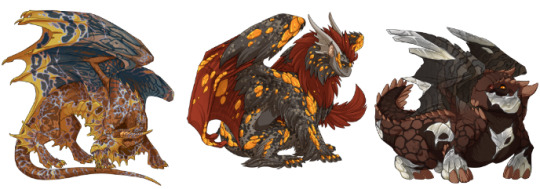
Personality: Strong and Dedicated, Metalworker dragons shape the ore through the flame that Molten Flame dragons venture out to bring. From a young age they train in their craft, working their way from apprentices to masters under the eye of Metalworkers before them. Centuries of this tradition has built an unparalleled skill and dragons from all across Sornieth will seek their abilities from the creative for beautiful art and sculpture to the practical, seen in great feats of engineering, building the tallest buildings and bridges, and the most productive and modern factories, to the innovative, seen in new forging techniques and technology. Though their work takes place behind the scenes, its influence can be seen across the land, and most of these dragons are kept well employed and paid handsomely for it. Throughout their lives, Metalworkers gain both great strength from lifting their materials and the most nimble dexterity as they craft more intricate details. Many have an eye for art and design, and minds that are very forward thinking, if not creatively, than practically. The hours they dedicate can be long however, beside the sweltering heat of the furnaces, and it is not uncommon for these dragons to be marked with scars and old burns, or suffer the loss of limb, hearing, or sight. Like their Molten Flame partners however, this rarely stops them, and though the nature of their work may change, and they are known for creating tools to adapt. Some who are blind learn to craft by touch alone, and sign language is regularly used regardless of hearing ability in the metal shops as it is often so loud. Overall it is clear why these dragons are sought far and wide for their unique skill.
Homes: Metalworker homes are often built close to the earth if not inside it. These dragons are found anywhere ore is: deep within mountains and sweltering volcanoes, in caves and alcoves, and deep under the earth, and sometimes a rare alluvial dragon, often of water flight, can be seen by flowing rivers alongside the rich ore and minerals deposited there. Building a home is an important part of a Metalworker’s life, and when they are ready, the young dragon will set out to find their own claim. From there they will use tooth, claw, horns, and strength to dig, sculpt, and shape, building a den entirely of their own creation. Each is unique and often these homes are both practical and beautiful, with simple and functional structure, but often decorated in truly gorgeous and special ways: creative metalwork in support beams, gold intricately lining the furniture, crystals sparkling like stars in the ceiling, or veins of ore running exposed through the walls.
In Conflict: It is often that these dragons are called on in times of war, tasked to forge weapons and defenses to support the cause. It is no secret that a sword forged by their hand will be of the highest craft, strong and well balanced, and their armor is known to withstand even the most brutal of blows. Different clans specialize in unique parts of the craft, their signature crafting styles visible in their work, from intricate filigree across breastplates, to gorgeous marbling like the currents of lava that well deep within the mountains in the steel of a blade. Still, every clan has its own talents and principles and there are plenty that refuse to partake in the crafting of instruments of war, sticking instead to other important crafts from buildings and bridges, machinery, prosthetics and other wearable augments, or even fine art. In the rare occurrences where a dragon is confronted directly, most are said to be intimidating enough in strong muscle and callused hands to make the fight not appear worth it. Individual strengths from there may vary and many of these dragons are well studied in the weapons they make, using them in unique and surprising ways.
Hoard:

#fr#flight rising#fr subspecies#flight rising subspecies#fr fire flight#flameforger's festival#fire flight#fr fire#fr lore#flight rising lore
3 notes
·
View notes
Text
[dropcap style=”font-size: 60px; color: #9b9b9b;”] T [/dropcap]ucked away in the northeastern corner of DuPont State Forest in Western North Carolina, Stone Mountain is the highest point in the state forest at 3,620 feet. Appropriately named for the exposed granite slab that traverses its summit, Stone Mountain offers a near 270° view of the surrounding terrain to winter hikers. Since the first time I went, nearly 12 years ago, the pines are taking over the summit, so views are harder to come by. Especially in summer, the leaf cover makes it even more difficult. This hike occurred on Monday, February 3, 2020 from 12:00 noon to 2:30pm. Our plan was to take the Rocky Ridge Trail to the Stone Mountain Trail, then on to the summit. Return would be back the same way.
[box type=”info”]
Hike Length: 3 miles Hike Duration: 2.5 hours
Hike Rating: Moderate Blaze: No blaze, trails are easily navigable.
Elevation Gain: 660 feet Hike Configuration: Up and back
Trail Condition: Rocky Ridge is excellent, but Stone Mountain is poor, very rocky.
Starting Point: Located a couple miles beyond Guion Farm on Sky Valley Road.
Trail Traffic: We encountered six other hikers on the Stone Mountain Trail.
How to Get There: DuPont State Forest can be accessed from Hendersonville, NC via Kanuga/Crab Creek Rd., from Asheville/Brevard via US64 and Little River Rd., or from Greenville, SC via Cedar Mountain and Cascade Lake Rd. Sky Valley Road is in the northeast corner of the forest. Look for printed trail maps at public parking areas.[/box]
[sgpx gpx=”/wp-content/uploads/gpx/Stone Mountain and Wintergreen Falls DuPont.gpx”]
There are two ends to the Rocky Ridge Trail that meet up with the Stone Mountain Trail. The southern end is on Sky Valley Road, is a 3 mile round trip, and rises 660 feet to the summit. The northern end starts on the Old CCC Road very near the junction with Sky Valley Road, adds a mile to the total distance and 500 feet more elevation gain.
The southern Rocky Ridge trailhead has a parking area large enough for a half dozen cars on the left side of Sky Valley Road less than two miles up from Guion Farm. The trail is wide and pleasant, and sandy with an indistinguishable uphill grade. This northeastern section of the state forest is dense woodland with a delightful mix of deciduous and evergreen trees.
You will discover the DuPont State Forest trail system to be quite robust. We reached two trail junctions on the short 1.5-mile hike up Stone Mountain. The first is .4 mile in. The Rocky Ridge Trail bears left and eventually down to the Old CCC Rd. and the Stone Mountain Trail turns right. Then just another tenth mile later, the Switchback Trail bears right and Stone Mountain takes off uphill to the left.
The Stone Mountain Trail begins moderately steep climbing right away and continues uphill until the summit. Unlike the near perfect conditions on the Rocky Ridge Trail, this trail is rocky and rutted from drainage. Just a touch less than a mile in, the trail turns a decidedly northeasterly direction and climbs to a large grassy clearing perhaps two acres in size. Passing through the meadow, we climbed another tenth mile past several large boulders alongside the trail, then began the final climb to the summit.
Those boulders are a nice place to take a breather because the last tenth mile is the steepest. The good news is that it isn’t far as the trail climbs through laurel and rhododendron. Just about the time you think you’ve had enough, you pop out on the summit with large granite outcrops and gnarly wind-swept pines. The summit surface is quite large and flat and affords long-distance views in nearly every direction. Be sure to spend some time exploring the summit. You can walk several hundred feet left or right.
To the left is a northerly view toward Asheville with the Great Craggy and Black Mountains behind. Looking west is the high country of Pisgah National Forest, including the easily identifiable tower-topped Mt. Pisgah. Straight ahead is Pinnacle Mountain with its radio and cell tower. You can also see the clearings in the forest that are the horse farms along Pinnacle Road.
To the right is the most expansive view, stretching far and wide toward South Carolina. There are communications towers barely visible many miles away that sit atop Rich Mountain in Transylvania County. Below you is the southwestern area of DuPont State Forest. When you go, see if you can pick out some of the more notable landmarks.
If you packed a picnic lunch, there are numerous great spots on the granite to sit for awhile and enjoy the picturesque surroundings. The largest of these is to your left, about 200 feet from the initial summit. Just follow the path through the gnarly pines. Speaking of lunch, while on top, we enjoyed following the circuitous path of a lone buzzard hovering on the wind a hundred feet above. Fortunately, his eyes weren’t on us.
The return trip for us was uneventful, but you really must keep your eye on the trail. It is a steep descent with many, many hazards from washout. There are exposed rocks and roots seemingly everywhere, just waiting for their chance to trip you, or worse.
When we got back to the car, the thermometer read 70 degrees. Can you believe that for early February?
#gallery-0-5 { margin: auto; } #gallery-0-5 .gallery-item { float: left; margin-top: 10px; text-align: center; width: 33%; } #gallery-0-5 img { border: 2px solid #cfcfcf; } #gallery-0-5 .gallery-caption { margin-left: 0; } /* see gallery_shortcode() in wp-includes/media.php */
Rocky Ridge Trail
Rutted trail
Grassy meadow
Cloud show
Boulders line the trail
Summit view, Stone Mountain
Large granite slab summit
Dave chillin’
East end Stone Mountain
Hendersonville & Black Mtns
Mt. Pisgah
Just stuff on the summit
Gnarly pine
Last fall’s goldenrod
Headin’ back down
[author]
[author_image timthumb=’on’] http://internetbrothers.org/images/author.jpg [/author_image]
This post was created by Jeff Clark. Please feel free to use the sharing icons below, or add your thoughts to the comments. Pack it in, pack it out. Preserve the past. Respect other hikers. Let nature prevail. Leave no trace.
[/author]
Rocky Ridge and Stone Mountain Trails, DuPont State Forest T ucked away in the northeastern corner of DuPont State Forest in Western North Carolina, Stone Mountain is the highest point in the state forest at 3,620 feet.
#dupont state forest#mt. pisgah#north carolina#pinnacle mountain#rocky ridge trail#sky valley road#stone mountain#stone mountain trail#transylvania county
0 notes
Photo


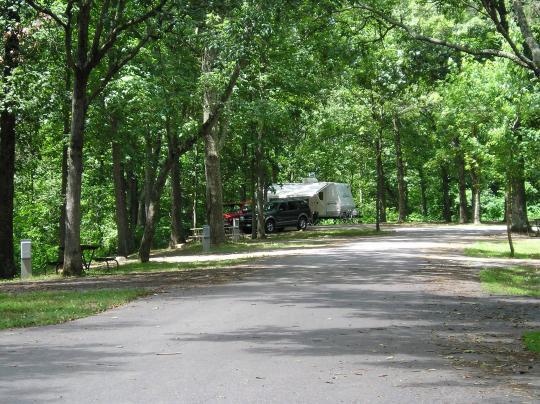
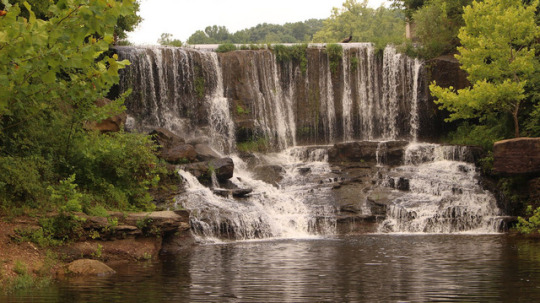
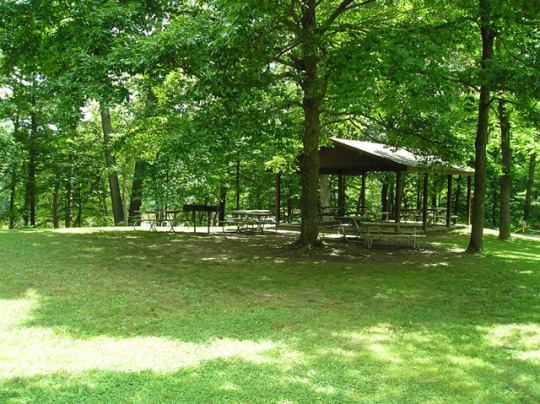

Forked Run State Park 63300 OH-124 Reedsville, OH 45772 Forked Run State Park is a small Ohio state park located three miles south of Reedsville in eastern Meigs County, Ohio. Its area is 791 acres, while the lake covers 102 acres. The name is pronounced with two syllables for "Fork-ed". It fronts on Ohio State Route 124. The park borders the Shade River State Forest, from which it was created in 1951. The dam was created in 1952. The lake was stocked and opened to the public in the following year. The park features an extensive campground with rustic cabins, picnic facilities, hiking trails, a swimming beach, two boat ramps, and a disc golf course. It also is located close to an Ohio River boat ramp, so the campground also serves Ohio River boaters. The cabins have gas lanterns, bunk beds, and a gas stove. These cabins have no showers. Showers are provided at the beach area. Forested hills, a picturesque lake, and the lazy Ohio River characterize Forked Run State Park. Located in the heart of Appalachia, colorful history, riverboats, scenic vistas, and abundant wildlife give the park its rural charm.. The Ohio River felt the pull of the Indian's paddle. The mouth of the Shade River which empties into the Ohio nearby was known as a gloomy, rocky place called the Devil's Hole. The Indians returning from their raids into western Virginia routinely crossed the Ohio at that point with their prisoners and plunder. They would travel through the valley of the Shade River on the way to their towns on the Scioto. Settlement of the area was slow to develop until the Indian threat had subsided and the discovery of coal in the region provided means of support. The river served as a territorial boundary, brought settlers into the Northwest Territory, and carried flatboats and "steamers" that shipped passengers and cargo from Pittsburgh to New Orleans. Today, the area is known as a truck-farming center which produces crops of cabbage, melons, sweet corn and the famous Ohio River tomatoes. Forked Run State Park lies in the forested hill country of southeastern Ohio. Much of the forest is second growth pitch pine and Virginia pine. The area is also rich in hardwoods such as oaks and hickories. Hemlock and mountain laurel are found in some of the deep gorges. Today, vast stands of oak, hickory, maple, and tuliptree clothe the deep ravines and hillsides. Wildflowers can be found in bloom except in winter months. Wild blue phlox, bloodroot, dame's rocket, cardinal flower, daisy fleabane, goldenrod and asters provide colorful displays. In spring, the hillsides burst forth with brilliant blooms of dogwood and redbud. The forest and fields provide habitat for a variety of wildlife species including gray fox, raccoon, opossum, gray squirrel, white-tailed deer and wild turkey. Many songbirds enjoy the refuge of the forest including wood thrush, white-breasted nuthatch, scarlet tanager, pileated woodpecker and whip-poor-wills. Two launch ramps provide access to the lake. One launch ramp provides access to the Ohio River. The ramp on Curtis Hollow Road offers no amenities. The boat ramp at the dam has tie-ups and is wheelchair accessible. A restroom is nearby at the beach parking lot. Boat rental is available. A 10-horsepower limit on boat motors is under review for this 120-acre lake. The park features a disc golf course. Anglers will enjoy nice catches of crappie, largemouth bass, bluegill and catfish. A valid Ohio fishing license is required. Hunting is permitted in designated areas of the park and the nearby Shade River State Forest. Squirrel, deer, grouse and wild turkey are popular game species in the area. A valid Ohio hunting license is required. Three picnic areas have tables and grills for picnicking opportunities. Two shelterhouses are available by reservation. The park features a 400-foot sand beach. Swimming is permitted in designated areas. Pets are NOT permitted on swimming beaches. Three hiking trails provide opportunity for exploration, exercise, nature study and wildlife observation. The Biking trail also allows hiking. When conditions permit, park visitors can enjoy sledding. Volleyball, horseshoes and tetherball can be enjoyed in day use areas of the park. Playgrounds are offered in the campground and in day use areas. Nature programs are offered during the summer months
0 notes